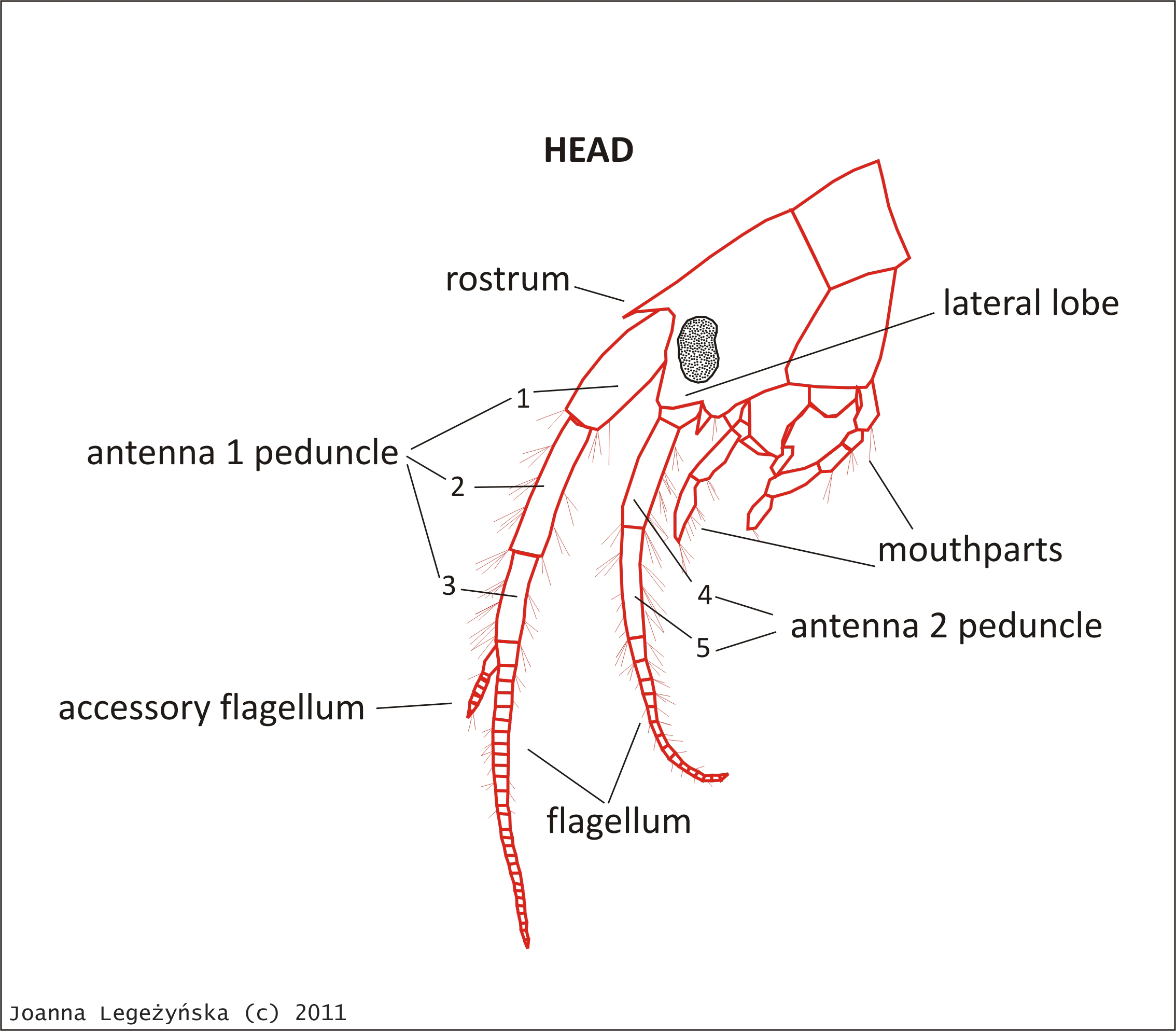:: |
:: |
amphipods |
:: |
:: |
species | :: | bibliography & links | :: | contact | :: | |||||
|
|||
The head bears compound eyes, two pairs of antennae and mouthparts. A rostrum (forward extension of the head) may be present, reduced or absent altogether. Eyes, when present, are very variable both in shape and size. Sexual dimorphism is quite common with the males usually having larger eyes than females. Both pairs of antennae are composed of a peduncle (3-articulate in antenna 1 and 5-articulate in antenna 2) and a multi-articulate flagellum. The accessory flagellum, when present, arises from the end of the antenna 1 peduncle. The presence, absence or number of articles of this appendage are crucial to amphipod taxonomy at family and generic levels. The flagella of both antennal pairs may bear, especially in males, sensory organs, such as aestheascs and calceoli. In front of head above the upper lip there is a sclerite termed the epistome. It is normally quite indistinct, but in some species is produced into a point, keel, or lobe. The mouthparts comprise upper and lower lips, mandibles, first maxillae, second maxillae and maxillipedes forming quadrate bundle or projecting conically beneath the head. The morphology of mouthparts is helpful in taxonomic classifications and trophic studies. |
|||
